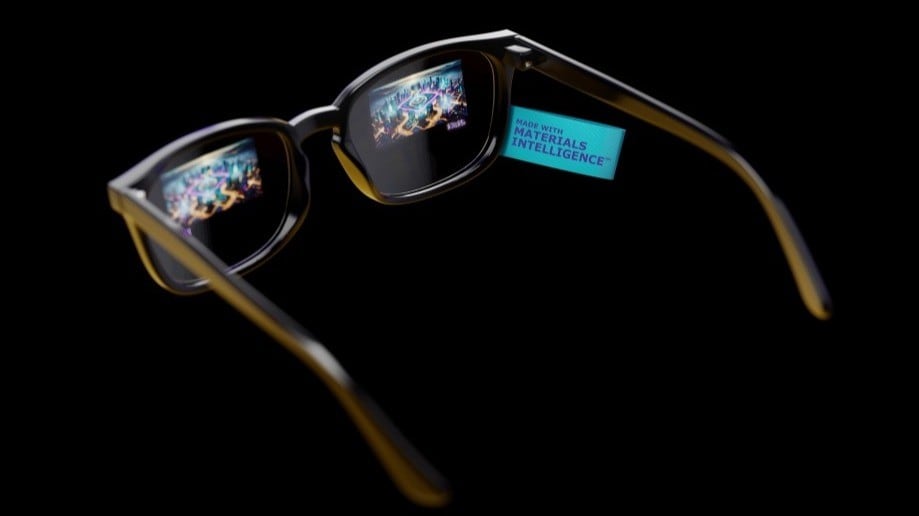Orion transports us into the metaverse

However, major technological challenges remain – and the Electronics business sector of Merck KGaA, Darmstadt, Germany, could also play an important role in overcoming them.
On September 25, Mark Zuckerberg presented a new prototype of his Orion AR glasses at the annual Meta Connect conference for developers. Wearing such AR glasses can entirely change your life, including how you look into the refrigerator. In addition to food stored in the fridge you might see recipes you can make with these ingredients. And you could be shown information about possible intolerances to the ingredients of some foods or their minimum shelf life.
Lightweight AR glasses are the key to the metaverse
With Orion, Meta is demonstrating the technological possibilities of AR and setting the direction for itself, suppliers and, last but not least, the providers of AR content. Zuckerberg calls AR glasses such as Orion the “holy grail” on the journey to a life fully assisted by AI. Rather than a completely digital virtual world as we see with e.g. the Apple Vision Pro, the focus here is on a real world constantly augmented with displayed apps, images, or videos – similar to a head-up display on the windshield of an automobile.
High-tech glasses could one day replace smartphones
Orion shows where the multi-billion-dollar journey will take Meta (formerly Facebook) like no other product. Orion squeezes cutting-edge technology into a tiny space and is one of today’s most sophisticated technological projects. Most importantly, the Orion glasses show what is possible and what still needs to be improved. Some digital corporations believe that such glasses will one day replace the smartphone, giving these already omnipresent firms an even more direct, personalized and comprehensive role in our lives. As well as accompanying us wherever we go, the glasses would see everything that we see, allowing them to interact with their wearers in a more intuitive manner.
Virtual and mixed reality glasses could transform our way of life
Many companies are looking at creating a new generation of glasses. To date, virtual or mixed reality glasses have mainly been popular among gamers and cinema lovers or used as virtual tour guides. Due to their size, their weight and not least their high price they were not yet suitable for a broader target group. However, we think this will change and see it as a transformational technology for the future.
Innovations from Electronics support further development
At our company, we love complex technological challenges. In the past, our innovations have driven the success of new technologies such as semiconductor materials or in light management. We also see ourselves in a promising role for the development of AR glasses, both today and in the future. These glasses symbolize the major technological challenges of our time. As I have repeatedly written in this blog on topics including artificial intelligence, EMD Electronics delivers important building blocks for overcoming these challenges.
Benefits of combining optics and electronics
AR glasses are just one example of the synergies we see at our company from bringing together our competencies in optics and electronics. The technological sophistication of AR glasses demands new optoelectronic materials and processes. I would like to go into more detail here and take a closer look at the technology behind the holographic display in the glasses. To ensure light weight and high energy efficiency Meta relies for its Orion on lenses with integrated waveguides made of transparent silicon carbide in the highest optical quality. We already know the high-tech material from fields including semiconductor manufacturing: It is one of the hardest ceramic materials, very light and offers good electrical conductivity.
Transparent silicon carbide creates easily visible and energy-efficient images
In contrast to other types of optical glass, silicon carbide has a very high refractive index and relatively low density. When used in glasses, this enables an expanded 70-degree field of vision, which AR glasses require for communicating with multiple people or when several apps are simultaneously active in the display. A three-dimensional nanoscale structure is etched onto the silicon carbide of the lenses, transforming the light projected into the lens into a holographic image for the viewer. Thanks to the properties of silicon carbide, the display is easily visible in various ambient light conditions and blends with the real world in a way that is very pleasant for the user. Moreover, as mentioned previously, silicon carbide excels thanks to its light weight and very good energy efficiency.
More innovations needed for wider adoption
When revealing its Vision Pro, Apple announced that it was primarily a product for early adopters. The glasses are capable of both augmented and virtual reality, but in my view the high price and lack of wearer comfort will stand in the way of major success. Similarly, for the Orion glasses I believe the cost of transparent silicon carbide is a drawback. In addition, all efforts to further reduce the overall weight will support the wearing comfort to use it all day. That’s why, we believe that the further development of processes and materials for handling alternative substances which offer comparable properties at lower prices will be a key field of research – so that as many people as possible will be able to take an “augmented” look in the fridge.
Source link
#Orion #beams #metaverse






